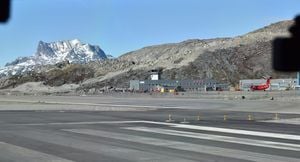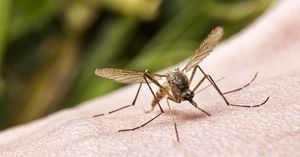Japan stands at the forefront of earthquake preparedness, particularly with the ever-present threat of seismic activity. Since it lies on the Pacific Ring of Fire, the country experiences frequent earthquakes, but its recent focus has shifted significantly toward improving communication and safety for both locals and foreigners.
The tragic 2011 Tōhoku earthquake, which lasted just six minutes and resulted in devastating consequences, significantly shaped this narrative. Not only was it the most powerful earthquake recorded in Japanese history, registering at 9.0 magnitude, but it also led to the Fukushima nuclear disaster.
After the earthquake struck, tsunami waves surged across Japan’s coastline, devastating areas like Kamaishi, Iwate. Although the region had the world’s largest seawall, it proved insufficient against the towering waves, highlighting serious gaps in disaster readiness.
Today, Japan's systems and practices reflect lessons learned from past disasters. The government has ramped up efforts to communicate effectively with the large influx of foreign tourists and residents, and this becomes increasingly important with millions of guests visiting yearly.
For many foreign residents and tourists, the language barrier presents challenges during emergencies. Despite Japan’s commitment to multilingual communication, inquiries directed at local disaster response centers often go unanswered.
Recent events, such as the 7.1 magnitude earthquake off the coast of Kyushu, rekindled anxiety about potential mega-quakes. Residents and tourists alike scrambled for information, but many were left confused, missing alerts largely intended for Japanese speakers.
Adriana Duran, who was visiting Tokyo during the Kyushu tremors, expressed her frustration about receiving no alert on the government’s safety app. “There’s hardly any information, and we don’t even know what to watch out for,” she said.
Local governments are making strides; for example, Miyazaki City has opened multilingual disaster call centers accessible through various online platforms. Yet, citizens’ awareness of these resources still falls short.
Moving beyond digital platforms, the need for clear, English signage on the streets has become increasingly apparent. Reports indicate many areas lacked proper tsunami evacuation information, leaving unsuspecting tourists ill-prepared.
This situation paints a mixed picture of Japan’s disaster preparedness. While efforts exist, gaps remain, particularly concerning the integration of foreign residents and visitors during emergencies.
The Japan Meteorological Agency's first-ever megaquake warning last week underscores the gravity of seismic threats. Issuing alerts calls for careful consideration, as seismologists grapple with deciding when and how to inform the public of elevated risks.
Harold Tobin, Washington state’s seismologist, observes Japan’s approach closely. The recent advisory, prompted by the Kyushu earthquake, instigated proactive measures such as canceling festivities and preparing emergency resources.
Backstate-side, the scenario brings forth looming safety questions. Should seismologists anticipate the potential of adjoining faults moving toward triggering larger events? What constitutes responsible warnings without inciting unnecessary panic?
Japan’s experience serves as both caution and key learning points for other seismic regions, such as the Cascadia subduction zone along the United States West Coast. The risks are not imaginary, as past events indicate devastating consequences from earthquakes.
Coastal communities must prepare better, according to the Federal Emergency Management Agency. Scenarios assume substantial casualties and infrastructural damage for major quakes, emphasizing the importance of community-based responses and personal preparedness.
Collaborative efforts for resilience can make all the difference. Local volunteers consistently stepping up to help one another—recognizing the presence and needs of foreigners—remains critical.
Personal stories reinforce the necessity of disaster preparedness; one student, witnessing his first significant tremor, spoke about how lack of knowledge left him paralyzed with fear. “I was stunned—my mind went blank, and I was gripped by intense fear,” he recalled.
While plans and advancements are underway, they must include solid connections with foreign populations residing within Japan. This goes beyond mere communication; it’s about fostering community resilience for everyone.
From organizational strategies to grassroots initiatives, there’s still ground to cover for adequate disaster communication and preparedness. Grasping the importance of ‘stock information’ versus ‘flow information’—the former consisting of constant knowledge shared over time—is critical for effective education.
Professor Taro Tamura emphasizes the necessity of teaching foreign residents the basics of earthquake safety. Information like ‘how to prepare’ and ‘what to expect’ can build confidence and prevent chaos during real-time disasters.
These efforts underline not just the survival of locals, but of visitors seeking to immerse themselves fully within their experiences of Japan. The overwhelming odds of facing emergencies dictate enduring collaborations focused on shared well-being.
Recent advancements also include technologies such as drones equipped to distribute multilingual alerts, epitomizing how innovative solutions can return agency to vulnerable populations. These developments instill hope—a collective ambition irrefutably focused on better preparedness and response.
Crisis situations are unpredictable, but they highlight the depth of human connection and compassion. Japan, through continual reflection and proactive measures, strives to safeguard both residents and visitors amid inherent threats.
It’s all about learning from the past to refine strategies for the future, making every effort count during crisis moments. Educational programs, community drills, and effective communication channels can pave the way for heightened resilience against the next potential disaster.



